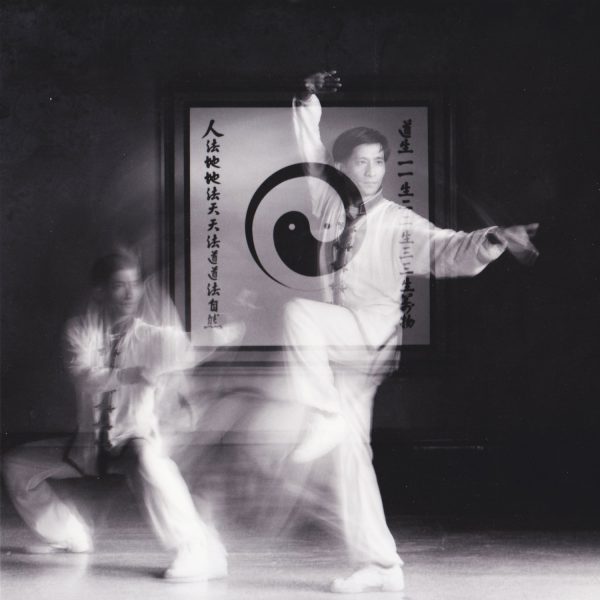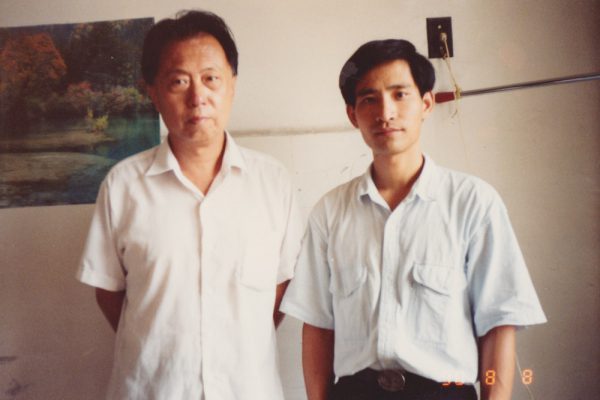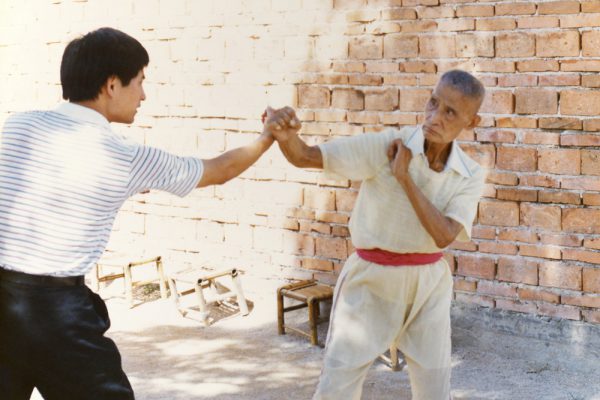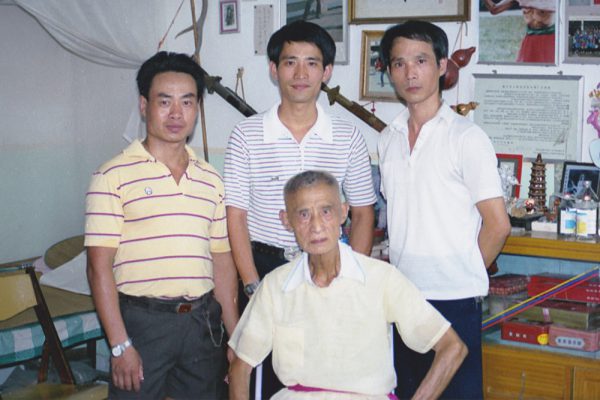The essence of wisdom in the martial arts and the Chinese medical arts is within its lineage. Lineage is the connection to the consciousness of the ancestral line. It’s the ability to receive direct knowing or direct transmissions from one’s master or masters. It is far beyond technique. It is also the ability to receive and pass on living wisdom to other students in the line.
Grand Master Nan Lu’s lineage is unique. It descends from not one but two extraordinary and powerful masters. Both passed to him certain keys of understanding health, healing, and living that he integrates into his teachings and programs. Master Wan Laisheng was a martial artist who achieved one of the highest levels of mastery in Chinese history. Master Xi-hua Xu is an extraordinary expert in authentic Chinese medicine with a rare gift that enables him to see the invisible pathways of the meridian system.
The gifts passed to Grand Master Nan Lu are embedded in his spiritual teachings and every program he develops. His students are the fortunate recipients of knowledge beyond book learning. He describes his lineage and masters in the following passage.
In the martial arts and in spiritual traditions, the relationship between master and student goes beyond studying and book learning. The bond is one of consciousness to consciousness. For the right student, it involves a “transmission” of knowledge — an event of direct cognition or direct knowing where information is passed, sometimes in an instant. These kinds of transmissions are beyond what our everyday mind can comprehend. The test of the strength of a lineage is if it can be passed along to others.
Lineage is one of the most important aspects of the internal martial arts, as it is in TCM. It comes from the spirit behind the form and is passed through transmission. It is not passed through human-made systems or book learning.
The internal martial arts are based on Qigong, which I have practiced for more than a half century. The lineages I hold come from two distinct systems that compliment and reinforce each other. Each derives its power and effectiveness from a way of learning that has its origins in the Tao and its natural path. Both Master Xi-hua Xu and Master Wan Laisheng have played pivotal roles in my physical, mental, and spiritual growth. These exceptional masters are holders of powerful well-respected lineages.
Let me tell you about them.
Master Xu is a respected scholar, researcher, and lecturer on Qigong and Taoist philosophy. For 27 years, he served as professor in the Chinese history department at Yunnan University where he developed a specialty in Taoism and its effect on longevity, human consciousness, and extrasensory perception.
His work with the Chinese Qigong Association, which is China’s government body dedicated to qualifying Qigong experts and advancing this ancient self-healing energy system, led to a national seminar series from 1988 to 1990 on Taoism and healing. He is a specialist in cancer, heart disease, and diabetes.
Today, Master Xu is one of a few rare individuals in China recognized for his ability to see the body’s invisible meridian system, which has given him a unique expertise in treating health conditions related to the function of organ systems. His singular skills also allow him to recognize the essence of materials and which meridians they impact.
Master Xu has been a much-sought-after health consultant by some of the highest-ranking members of the Chinese government, including the third premier of the People’s Republic of China, a former senior commander of the Chinese navy, and a former Chinese minister of health.
He is also responsible for co-developing three of the major self-healing programs based on Wu Ming Qigong for the Traditional Chinese Medicine World Foundation — LifeForce: Tao of Medical Qigong, The Dragon’s Way® Qigong Program, and the Breast Cancer Prevention Project. Thousands of individuals use these special tools to rebalance their health and improve their lives.
My lineage can be traced through Master Xu directly to Lao-Tzu, an extraordinary philosopher and writer in China during the sixth century B.C.E. who clarified the underlying philosophy of Taoism.
During my formative years, I studied martial arts with Wan Laisheng, one of China’s legendary Kung Fu masters. He was the third-generation master and lineage holder of Ziranmen, the unique Taoist natural or “no form” style of martial arts. It is a powerful, internal martial arts system that incorporates Qigong, meditation, combat techniques, and Taoist philosophy.
Its lineage began with Xu Ai Zhai, commonly known as Dwarf Xu, and was passed to Du Xinwu, who served as a bodyguard to Sun Yat-sen, the founding father and first president of the Republic of China. Master Du passed this lineage to his eldest son Du Xui Si as well as to Master Wan. They became the third holders of the Ziranmen lineage. I am the fourth.
Master Du’s acceptance of Master Wan as his second disciple was highly unusual. Tradition dictated that only one disciple in an entire generation is chosen to learn this natural style of fighting. Master Wan became one of the Five Tigers of the North. Few were his equal. He demonstrated his extraordinary fighting skills into his nineties.
Master Wan was also a highly educated scholar who graduated from and taught at China’s top agricultural universities. He was an expert in Qigong, fighting styles, Chinese medicine, orthopedics, and Taoism, and a prolific author who integrated Chuang Tzu’s Taoist philosophy into the martial arts.
As you can imagine, combat often produces injuries. Master Wan developed tremendous skill in orthopedics. I once saw him heal a broken bone overnight. He also passed many secrets in orthopedics and taught me unique massage techniques.
Whether in martial arts or in TCM, Master Wan’s training emphasized how to develop a light, delicate touch as well as great strength with emphasis on quality. My years of training with this legendary master shaped my life in a profound way.








